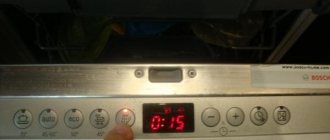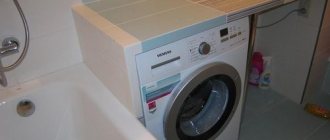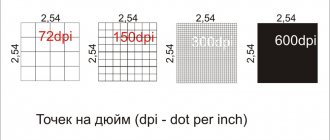Often, when choosing a new refrigerator, the buyer does not pay attention to such a criterion as the noise level of the refrigerator. An annoying rumble can be an unpleasant surprise. Noisiness is the value of the hum expressed as a digital value. Measured in decibels (dB). The device with the lowest value produces less hum.
Refrigeration equipment noise standards
In accordance with GOST 16317-87, the established noise level for a refrigerator should be no more than 53 dB. The state document has approved a scale according to which the noise of devices is divided into three levels:
- low – from 25 to 34 dB;
- average – from 35 to 44 dB;
- high – more than 45 dB.
Devices of a certain modification have an individual noise level.
- the norm for refrigeration equipment with the noFrost system is from 44 to 47 dB;
- devices with a different system operate with a hum level in the range of 34-42 dB.
The operating hum level of the selected refrigerator model is stated in the technical data sheet and on a sticker on the back surface of the equipment.
What to remember when choosing a refrigerator.
- The more complex the model, the more additional functions and technical capabilities, the more difficult it is to achieve minimal noise. For example, the noFrost system has a fan that operates with a certain hum. You can reduce the impact of noise on humans by installing the refrigerator at the maximum distance from living rooms.
- Two-compressor refrigerators operate in succession; in this case, it is impossible to completely eliminate noise. Manufacturers minimize noise levels by choosing low-power compressors. In this case, the refrigerator will make noise when each compressor turns on and off, but the overall noise level may be even lower than with single-compressor equipment.
For comparison: the noise created by a conversation in a loud voice is 50 dB, the hum from a clock is 30 dB, the noise from the keys of a typewriter is from 51 to 70 dB, the noise of tree leaves is approximately 25 dB.
Legislation against noise
In our country there is no specific law protecting the peace of citizens during the day and at night. For example, the standards for maximum sound pressures (40 and 50 dB) were established not by civil or criminal proceedings, but by sanitary standards. You will also not find a definition of noise of 70 dB as harmful to health in modern legislation. And people themselves do not respect each other’s needs for rest. Regardless of age (a neighbor can play music loudly at night, even if he is 18 years old, even 40, even 70) and social status. Construction work is also being carried out day and night, bypassing the law with permission received from parliamentary bodies. It's easier to fight with neighbors. At night, you can call the police and prosecute them for disturbing the peace. During the daytime, if someone bothers you and you are sure that you are right, you can call SES or Rospotrebnadzor employees, who are required to measure the noise level and record your complaint.
There are provisions regarding which premises are recognized as residential and the acceptable conditions for living are prescribed therein. There you can find information about violations of sound pressure standards during the daytime, among other things.
In order not to get into trouble when calling the police, you need to understand what daytime and nighttime mean. So, SanPiN norms tell us that daytime is from 7.00 am to 11.00 pm, respectively, the night lasts from 11.00 pm to 7.00 am. in accordance with the Federal Law on the maintenance of normal living conditions, violations of these same norms face administrative liability.
The law also prohibits construction work that violates noise standards at night. If construction is still underway in a residential area, you can contact the municipal authorities or Rospotrebnadzor. Each situation is individual and therefore, before doing anything, consult specialists for advice.
Methods for measuring noise levels
You can determine the noise level of the selected device using special equipment - a sound level meter. The cost of the device is quite high, so there is no point in buying it for household needs. If you want to find out what the noise level of a refrigerator is in an apartment, just invite a specialist.
If you have a sound level meter, you need to set it to read between 50 and 100 dB and point the microphone towards the refrigerator, maintaining a distance of approximately 50 cm. After a few seconds, the measurement results will be displayed on the screen.
Expert advice: if the value is greater than that specified in the technical data sheet, most likely the refrigeration equipment is installed unevenly. It is necessary to check the vertical and horizontal levels, twisting the legs to adjust the position of the refrigerator. If the indicator has not changed after repeated measurements, you should invite a specialist.
Noise Reduction Methods
To minimize the noise emanating from a working refrigeration unit, it is recommended to follow the following rules for using the equipment:
- Do not overload the chambers with more products than indicated in the technical specifications of the unit.
- Do not install equipment close to furniture or other household appliances.
- Leave a gap between pots and other containers located in refrigerator compartments.
- Place additional sound insulation between the rear of the unit and the wall.
Eliminating noise in the refrigerator
Thus
The noise of the refrigerator compressor is unpleasant, but inevitable. There are norms and noise standards in decibels that each model of household appliance must comply with. If the noise seems excessive, it is recommended to take appropriate measures. First, call a professional who will measure the noise level. If exceeding the norms is detected, use the advice of specialists to prevent increased noise.
Causes of noise
- Compressor operation. If two compressors are installed in the device, the level will be higher accordingly. Despite the fact that two-compressor devices are additionally equipped with noise-reducing devices, they operate louder than single-compressor devices.
- Noise is created by parts that come into contact with the compressor during operation.
- The hum is created by the refrigerant as it moves through the condenser and evaporator.
- Additional sounds - characteristic clicks - are heard when the relay is activated.
- The presence of cooling fans creates a hum; the more of them, the louder the refrigerator operates.
- As a rule, small refrigerators are noisier than larger ones. This is due to the fact that the compressor is installed on the outer wall of the device.
- New devices are somewhat louder in the first days, as the moving parts are grinding in.
The noisiest are large-volume devices, the design of which includes a fan installed in the motor part. The main criterion for a device to be noisy is a restful night's sleep. If you feel that the equipment is loud, but you do not wake up at night, this means that the device is working properly and is functioning within normal limits.
Note: when choosing a specific model, you need to correctly prioritize. It should be borne in mind that a single-compressor refrigerator is quieter, but produces less cold in hot weather. At the same time, a two-compressor device operates louder, but freezes much better.
Permissible noise levels in residential premises
It is regulated by legislative acts, according to which the time of day is divided into periods and for each period the permissible noise level is different.
- 22.00 – 08.00 period of silence, during which the specified level should not exceed 35-40 decibels (this is where this indicator is considered).
- From eight in the morning to ten in the evening, according to the law, it refers to daylight hours and the noise can be a little louder - 40-50 dB.
Many people are interested in why there is such a difference in dB. The thing is that the federal authorities gave only approximate values, and each region sets them independently. For example, in some regions, in particular in the capital, there are additional periods of silence during the day. Usually this is from 13.00 to 15.00. Failure to remain silent during this period is a violation.
It is worth saying that the standards mean the level that cannot cause any harm to human hearing. But many do not understand what these indicators mean. Therefore, we provide a comparison table with noise levels and what to compare with.
- 0-5 dB – nothing or almost nothing is heard.
- 10 – this level can be compared to the slight rustling of leaves on a tree.
- 15 – rustling of leaves.
- 20 – barely audible human whisper (at an approximate distance of one meter).
- 25 – level when a person speaks in a whisper at a distance of a couple of meters.
- 30 decibels compared to what? - a loud whisper, the ticking of the clock on the wall. According to SNiP standards, this level is the maximum permissible at night in residential premises.
- 35 – approximately at this level the conversation is conducted, albeit in muted tones.
- 40 decibels is normal speech. SNiP defines this level as acceptable for daytime.
- 45 is also a standard conversation.
- 50 – the sound a typewriter makes (the older generation will understand).
- 55 – what can this level be compared to? Yes, the same as the top line. By the way, according to European standards, this level is the maximum permissible for class A offices.
- 60 is the level determined by law for ordinary offices.
- 65-70 – loud conversations at a distance of one meter.
- 75 – human cry, laughter.
- 80 is a working motorcycle with a muffler, also this is the level of a working vacuum cleaner with an engine power of 2 kW or more.
- 90 - the sound made by a freight car when moving on a piece of iron and can be heard at a distance of seven meters.
- 95 is the sound of a subway car when moving.
- 100 – at this level a brass band plays and a chainsaw works. The sound of the same power is made by thunder. According to European standards, this is the maximum permissible level for the player’s headphones.
- 105 - this level was allowed in passenger airliners until the 80s. last century.
- 110 – noise made by a flying helicopter.
- 120-125 – the sound of a chipper operating at a distance of one meter.
- 130 – this is how many decibels a starting plane produces.
- 135-145 - a jet plane or rocket takes off with such noise.
- 150-160 – a supersonic aircraft crosses the sound barrier.
All of the above are conditionally divided according to the level of impact on human hearing:
- 0-10 – nothing or almost nothing is heard.
- 15-20 – barely audible.
- 25-30 – quiet.
- 35-45 is already quite noisy.
- 50-55 – clearly audible.
- 60-75 – noisy.
- 85-95 – very noisy.
- 100-115 – extremely noisy.
- 120-125 is an almost unbearable noise level for human hearing. Workers working with a jackhammer must wear special headphones, otherwise hearing loss is guaranteed.
- 130 is the so-called pain threshold; a sound higher than this is already fatal for human hearing.
- 135-155 – without protective equipment (headphones, helmets), a person experiences concussion and brain injury.
- 160-200 – guaranteed rupture of the eardrums and, attention, lungs.
Above 200 decibels can not even be considered, as this is a lethal sound level. It is at this level that the so-called noise weapon operates.
Ways to reduce noise
- First of all, you need to check the surface on which the refrigerator is installed - it must be perfectly flat. If necessary, rubber layers are placed under the legs.
- It is important that the appliance does not come into contact with kitchen furniture.
- Do not place dishes close together inside the refrigerator.
- If possible, use only one camera.
- Use sound insulation to isolate the noisiest parts. Rubber, which is fixed between the wall and the back surface of the device, effectively absorbs the noise.
- The inside of the chamber is lined with Shumka.
- If the compressor and fan are located outside the refrigeration equipment, mastic can be applied around them.
Review of the quietest refrigerator models
| Trademark | Model | Noise level, dB | Note |
| Liebherr | ST 3306 | Less than 40 | Single compressor |
| Liebherr | CUP 3021-22 | 39 | With noFrost system |
| Electrolux | ENB 38943 X | Less than 40 | With noFrost system |
| Electrolux | EN 3881 AOX | Less than 40 | Single compressor |
| Bosch | KGS 39 XW 20 | Less than 40 | Two-compressor |
| Samsung | RL-59 GYBMG | 38,5 | With noFrost system |
Refrigerator noise
Almost any household appliance makes at least minimal noise when operating. Refrigerators are no exception in this case. But I would still like to choose a model that is silent, so now we will consider this criterion.
There are no refrigerators that are completely silent. They all make sounds during operation or when turned on/off. And the more functions and different systems there are in the refrigerator, the more powerful the compressor it requires. The noise level directly depends on how much compressor power is used. Its unit of measurement (noise) is decibel (dB). The lower this parameter is, the less noise the refrigerator makes during operation. However, in some cases, when the refrigerator is very loud, the problem may lie in its malfunction. Therefore, one cannot attribute all the acoustic features of the device to the high noise level of the refrigerator itself.
According to GOST 16317-87, the compressor noise level should not be higher than 53 dB. In different models, this parameter varies in the range from 20 to 50 dB, but no one exceeds the value of 53. If the refrigerator emits 50 dB during operation, then they try not to buy it, because... It's pretty loud. The average value is 40-46 dB. This noise can be compared to the sound of the street with slightly open windows. It is ideal when the compressor operates, producing noise in the range of 30-40 dB. For an analogy: a human whisper makes about the same noise. When you are in the kitchen with a working refrigerator, you will not notice its operation at all.
The operating noise of the model with the No Frost system is slightly higher than that of the conventional model. This is due to the fact that No Frost technology involves rotation of the fan blades of a given system. This noise is not loud, but its increased level is definitely felt.
Next is the number of compressors. It’s easy to guess that two-compressor models will be louder than single-compressor models, but there is a certain peculiarity here. A single-compressor refrigerator uses a powerful unit, the operating volume of which is higher than that of two compressors in the corresponding models. Therefore, in terms of noise, it is better to choose two-compressor refrigerators - they are a little quieter.
When a buyer makes his choice in a shopping center, he does not notice the sound, because... The room is already relatively loud. But once the refrigerator has been running for a day or two at home, noise becomes a real problem. Therefore, we recommend that you look at the technical documentation, where this parameter should be indicated by the manufacturer. If the noise is within 30-40 dB, then this is a good characteristic and you can buy such a refrigerator.
Please rate the article:
Join on Telegram











